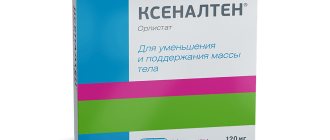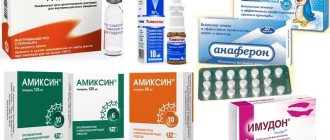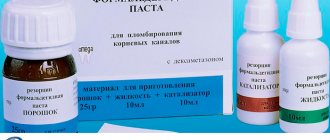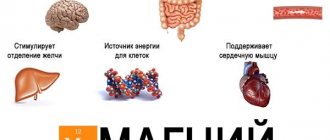Indications for use of Bishofite
Bishofite is used topically as a balneological remedy (therapeutic mud, mineral water) for the following diseases:
— deforming arthrosis;
- radiculitis;
- rheumatoid arthritis;
- lumbodynia.
Bishofite also has a therapeutic effect in other chronic diseases of the musculoskeletal and neuromuscular system of an inflammatory and dystrophic nature. This is evidenced by reviews of Bishofite from patients who used this drug.
Medicinal properties
The drug is absorbed through the skin, most of all increasing the content of magnesium, calcium, sodium and potassium in the body due to the salts of these metals contained in it. Magnesium is necessary for the construction and regeneration of connective tissues (including cartilage). In addition, it improves the metabolism between blood, lymph and intercellular fluid. Calcium is needed for building bone tissue (namely, calcium phosphate, into which it is converted). Sodium and potassium are involved in many processes in the body, such as the transmission of nerve impulses.
The full mechanisms of action of the drug are still poorly understood, but the absence of allergenic and carcinogenic properties has been proven.
The average price is from 60 to 80 rubles.
Method of administration of Bishofite and dose
Bischofite brine is prescribed in the form of compresses. Before using Bishofite, it is necessary to warm up the area of the body where the compress will be used. To do this, a joint or a certain area of the body is warmed with a heating pad or a blue lamp for 3-5 minutes.
Bishofite brine can be diluted in water in a 1:1 ratio or used undiluted. Bishofite is rubbed into the sore spot for 5 minutes, after which a compress is applied. Gauze is moistened with brine, applied to the affected area and covered with wax paper. This compress is especially effective at night, which is confirmed by reviews of Bishofite. After removing the compress, wash the skin area with warm water.
The duration of treatment is from 10 to 12 procedures, which are carried out every other day.
Bishofite gel is rubbed into the affected area 2 or 3 times a day. Bischofite gel is used without preliminary warming and without a compress. The course of treatment lasts from 10 to 14 days; if necessary, after a month, treatment with Bishofite gel can be repeated.
Description of the drug
The reserves of natural elements that can help people in the fight against various ailments are truly inexhaustible. Scientists constantly manage to find new “magic” substances that quickly and easily eliminate even the most serious diseases. These include a unique mineral - a natural source of magnesium called “bischofite”.
It is interesting that it was found and discovered in the middle of the last century in Germany. The workers were searching for new oil locations and had to constantly deal with a special oil brine. The men were extremely surprised when, as a result, they noticed that many of their hands stopped hurting, and even old arthrosis nodules began to dissolve.
Of course, doctors from all over the world drew attention to this unusual phenomenon. Thus, a new unique mineral was discovered, which turned out to be absolutely irreplaceable in the field of medicine.
Currently, it is part of many gels, ointments and special healing pastes. Cosmetologists don’t forget about bischofite either.
Experts first of all recommend paying attention to these remedies to everyone who suffers from arthrosis, osteochondrosis and other joint problems. It is most convenient to use bischofite in the form of a gel. It is easy to apply and quickly begins to affect the problem area.
The main advantage of the product is its ability to provide rapid pain relief. As you know, with various problems with the joints and spine, people also suffer from severe pain in problem areas.
And not all modern means, the action of which is aimed at treating them, are also capable of quickly eliminating painful sensations. “Bishofite” relieves pain almost immediately after application and allows the patient to feel cheerful and active again.
Of course, if the remedy was used only once or twice as a pain reliever, then the unpleasant sensations will quickly return, so it should be used regularly for a long time in order to completely cope with your illness.
Effect of magnesium on the body
Fifteen years ago in the Poltava region, at a depth of 2.5 kilometers, a layer of an unusual mineral was found. Drillers noticed that when they rinsed with brine, pain in the joints and muscles of their hands went away, and if they took a bath, the fatigue after a hard work shift went away. That's when they paid attention to his studies. It turned out that this was a discovered mineral from the ancient sea - the progenitor of all life on our planet.
For the first time such a mineral was discovered by the German scientist Gustav Bischof, after whom it was named - “bischofite”. Bischofite from the Volgograd deposit has been known since Soviet times. In the 80s, they were looking for it by all means to save them from joint problems. Poltava bischofite has the deepest occurrence, geological age and the greatest biological effects on our health.
For the first time, a natural resource has a physiological basis for its effects in solving joint and spine problems.
Transcutaneous penetration of magnesium bischofite
- Ionized magnesium penetrates through the mouths of the sebaceous and sweat glands
- Subcutaneous depot of magnesium ions, which are delivered by lymphatic transport to problem areas
All types of physiotherapy, heat, massage, baths are needed in order to strengthen and accelerate the permeability of the skin to magnesium ions.
Biological role of magnesium in the body:
- is an activator of more than 300 enzymes;
- regulates calcium metabolism;
- participates in protein synthesis, regulation of immunity;
- participates in the formation of teeth and bone tissue;
- participates in glucose metabolism;
- provides energy to every cell of the body;
- regulates neural transmission and neuromuscular conduction;
- regulates the tone of internal organs, skeletal muscles and the heart.
Magnesium. The most important mineral is necessary for the functioning of the nervous, cardiovascular systems and musculoskeletal system. More than 50% of magnesium is found in bones and cartilage, so together with calcium it plays a skeletal-forming role.
About 50% of magnesium is in the heart and muscles, less than 1% is in the blood plasma. Magnesium is important in the regulation of cardiovascular activity, nervous activity, neuromuscular transmission, and muscle tone. Being a natural regulator of calcium metabolism, magnesium controls the accumulation of calcium in cartilage and bones. Magnesium deficiency is a serious problem.
With magnesium deficiency, neurological and cardiological symptoms appear (depression, nervousness, insomnia, tachyarrhythmias, arterial hypo- and hypertension), calcium metabolism is disrupted.
Muscle spasms and cramps, morning stiffness, muscle and joint pain are observed; osteoporosis develops. Since magnesium regulates calcium metabolism, its deficiency impairs the absorption of calcium and increases its leaching from bones and articular cartilage. “Sand” in the gallbladder and kidneys is one of the symptoms of calcium leaching.
Magnesium deficiency affects almost 50% of the population. Its deficiency is contributed to by our diet and gastrointestinal diseases that interfere with its absorption in the intestines. At the same time, magnesium deficiency is often hidden due to the nonspecificity and variety of symptoms. The most important manifestation of magnesium deficiency is chronic inflammatory-dystrophic conditions of joints, bones and ligaments.
Most musculoskeletal problems are exacerbated by a lack of magnesium. Therefore, in the rehabilitation of all joint and muscle diseases, injuries and fractures, along with calcium, it is necessary to saturate the body with magnesium.
Why is magnesium so important? As is known, a billion years ago, during the formation of life on Earth, primary cells originated in the marine environment. Unlike modern sodium chloride oceans, ancient seas were magnesium chloride oceans. It is magnesium that is involved in many biochemical processes, and continues to be an activator and stabilizer of the vital activity of every cell in living nature.
Composition and release form
Bischofite in the form of dissolved magnesium chloride salts is emitted by the water of geysers in artesian pools. Its uniqueness also lies in the fact that in addition to magnesium it contains:
- calcium;
- potassium;
- sodium;
- bromine;
- iron;
- molybdenum;
- boron;
- copper and other elements, and there are more than 70 of them!
As you can see, this is a real storehouse of useful components. But it is magnesium, when combined with other minerals, that produces the product that is valuable for its unique healing effects on the body.
Release form:
- solution in glass containers of 500 ml and 1000 ml;
- bath liquid 500 ml;
- body gel-balm in tubes of 75 ml and 100 ml.
Bishofite for cellulite
The use of Bishofite against cellulite gives positive results and reduces the “orange peel” appearance.
Bischofite is prescribed for cellulite in the form of compresses and baths. The use of compresses involves preheating the problem area; it is best to use the compress at night. It is necessary to make compresses with Bishofite for cellulite every other day, the course is 12 days.
To prepare a bath for cellulite, add a liter of Bishofite or 200 grams of Bishofite salt (in a rag bag) to warm water, take water procedures for 10-20 minutes, then rinse with warm water. The course of taking baths with Bishofite for cellulite is 10-12 procedures, frequency – once every two days.
pharmachologic effect
In 1995, clinical trials on animals were conducted at the Volgograd Medical Center. According to their results, bischofite is a biologically active substance that has immunotropic, anti-inflammatory and weak analgesic effects . The pharmacological activity of the natural compound is based on the high concentration of magnesium in its composition, which determines its widespread use in the following areas of medicine:
- balneology;
- dermatology;
- neuropathology;
- physiotherapy;
- traumatology.
Magnesium deficiency in the human body provokes the development of inflammatory processes. If there is a deficiency of a microelement, more than 350 biochemical reactions that should occur with its direct participation will not occur or will occur in a distorted version. But its sufficient content in tissues increases their resistance to alteration and reduces the release of fluid from small blood vessels. The microelement is also characterized by stimulation of the biosynthetic functions of fibroblasts and stabilization of energy metabolism.
Excessively long-term use of preparations with bischofite can cause a local irritating effect on the mucous membranes of the digestive tract. Its nephro- and hepatotoxic effects are also noted.
Bischofite for joints is prescribed to strengthen muscle and connective tissues, which becomes an excellent prevention of their further destructive and degenerative changes. Percutaneous entry into the inflammatory focus of a high concentration of a bioactive compound stimulates blood circulation in damaged tissues. Nutrients and molecular oxygen begin to flow to them, accelerating regenerative processes.
Contraindications
Almost not. Do not take only if you are individually intolerant to any of its components.
During pregnancy and breastfeeding
No effect of “Bishofite” on the course of pregnancy and the quality or quantity of milk was found, so it can be used in these cases.
"Bishofite" is an excellent option for helping to get rid of problems with the lower extremities during pregnancy. But it is important to know other safe methods of treatment (not only with the help of medications), which you can read about in the article: Swelling of the legs during pregnancy.
What kind of mineral is this
Bishofite, the active ingredient of drugs of the same name in the form of gels, ointments and solutions, is light crystals, easily soluble in water, and is particularly hygroscopic.
In air, bischofite instantly absorbs moisture, and the crystals turn into drops of liquid. Accumulations of the mineral can take the form of layered or granular deposits located at a depth of about 2.5 km. The mineral is extracted by leaching - passing water from artesian depths through a dry mass, which washes away subsoil deposits and brings them to the surface.
The main component of bischofite is magnesium chloride salt, additional substances are metal ions, micro- and macroelements, each of which has a specific significance for the human body.
- Magnesium chloride. An easily digestible source of magnesium ion. Necessary for the occurrence of many physiological processes: transmission of nerve impulses, functioning of the nervous system, hormonal and enzymatic synthesis, contractile function of muscles, bone strength, elimination of allergic and inflammatory reactions, hematopoiesis.
- Magnesium bromide. A source of magnesium and bromine - regulators of mental activity, stabilizers of inhibition-excitation processes in the myelin sheaths of brain cells.
- Calcium chloride. An additional source of calcium - a stimulator of immune responses, the most important electrolyte of the human body, a participant in muscle contractions.
- Calcium sulfate. A compound essential for bone strength.
- Potassium chloride. A source of potassium ions that stabilize the osmotic pressure in the body cells involved in the process of contraction of the heart muscle, and a regulator of the condition of the vascular wall.
- Sodium chloride. Acts as a solvent for other compounds.
In addition, it contains silicon, rubidium, lithium, molybdenum, titanium, which are found in body tissues in small quantities, but perform important functions in metabolism. And:
- boron – necessary for the transition of vitamin D into its active form, a regulator of the synthesis of sex hormones and the functioning of the nervous system;
- iodine is the most important mineral for the normal functioning of the thyroid gland, and, as a result, for the optimal course of all metabolic processes in the body;
- copper is an important microelement for hematopoiesis that takes part in the synthesis of enzymes;
- iron – necessary for the synthesis of hemoglobin and cellular respiration processes.
Bishofite brine is an aqueous concentrate of all those compounds that the pure mineral is rich in. Scientists were able to isolate about 70 biologically active compounds. The saturation of salts gives bischofite beneficial qualities that are 40 times higher than those of salt from the Dead Sea. The drug “Poltava Bischofite” is considered the most active and suitable for medical use due to the fact that it is mined from the deepest and most ancient deposits of pure mineral.
Analogs
"Target T"
Biologische Heilmittel Heel GmbH, Germany Price from 130 to 1300 rub.
Used for arthrosis and arthritis. Available in the form of ointment, tablets and solution for injection. As a rule, it is prescribed as part of complex treatment.
pros
- Various release forms - you can choose a convenient one
- Natural composition
Minuses
- Helps the body solely due to the placebo effect, since it is a homeopathic remedy
- Relatively expensive drug.
“911 with bischofite”
TWINS Tech, Russia Price from 60 to 100 rubles.
It is a complete analogue of the “Bishofite” gel, differing for the better in the presence of natural herbs such as cinquefoil, golden mustache and comfrey.
pros
- Nice smell
- Cheap remedy
- Sold in almost all pharmacies
Minuses
- May cause allergies if individual intolerance occurs.
Form of being in nature
The appearance of crystals . The appearance of crystals is determined by the shapes m, o, r, less often a, in isolated cases c, s and u were noted. The crystals are elongated along the c axis or along the edge of the (111) : (111) zone, short-prismatic to acicular. The edges are sometimes very smooth.
Twins along [112] with a fusion plane almost parallel to (110) and an angle between the c axes of both individuals equal to 83°04′.
Aggregates. Granular, leafy, fibrous and parallel-fibrous aggregates, clusters of needle-shaped crystals.








